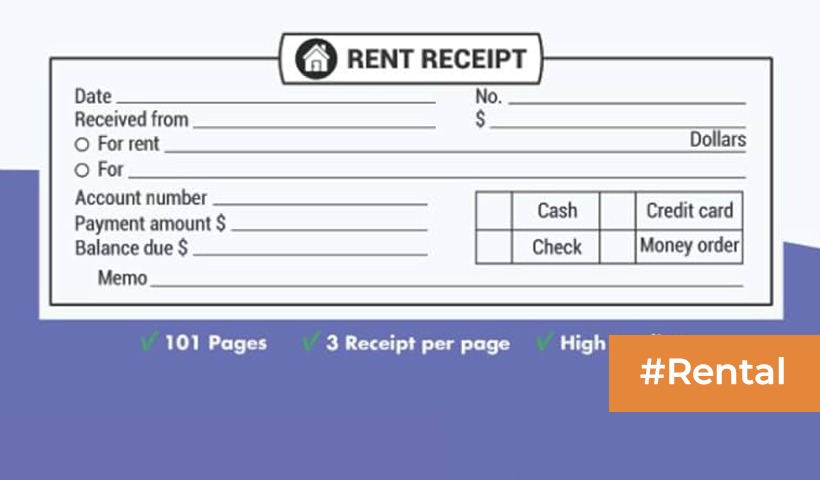Make Rent Payment through Credit Card
In a world where digital transactions continue to redefine the way we handle finances, the landscape of rent payments is also undergoing a significant transformation. Traditionally, rent payments were synonymous with traditional methods like cheques, cash, or bank transfers. However, a paradigm shift has occurred with the advent of technology, bringing forth the option to make rent payments through credit cards. This article delves into the evolution of rent payments in India, exploring the benefits, considerations, and the impact of this innovative approach on tenants and landlords alike.
The Traditional Landscape of Rent Payments
1. Cheques, Cash, and Bank Transfers:
- Historically, tenants in India have relied on conventional methods such as writing cheques, making cash payments, or initiating bank transfers to fulfill their monthly rent obligations. While these methods have been widely accepted, they come with their own set of challenges, including the inconvenience of manual processes and the potential for delays in clearing cheques.
2. Security Deposits and Post-Dated Cheques:
- Rental agreements often involve the submission of security deposits and post-dated cheques for the entire lease duration. This practice, while customary, poses challenges for tenants, including the need for meticulous financial planning to ensure sufficient funds in the account for each cheque’s clearance.
The Rise of Digital Payments in India
1. UPI and Mobile Wallets:
- The evolution of digital payment platforms, including Unified Payments Interface (UPI) and mobile wallets, has streamlined financial transactions in various sectors. However, the adoption of these methods for rent payments has been limited, primarily due to the preference for more established and traditional channels.
2. Challenges with Existing Systems:
- While digital payments offer convenience, challenges persist in convincing all stakeholders in the rental ecosystem to embrace these methods fully. Landlords, particularly those from older generations, may be more comfortable with the familiarity of traditional payment methods.
The Game-Changer: Credit Card Rent Payments
1. Introduction of Credit Card Payments:
- A recent and noteworthy development in the rental landscape is the introduction of credit card payments for rent. This allows tenants to leverage their credit cards for fulfilling their monthly rental obligations, introducing a level of flexibility and convenience that was previously unavailable.
2. Key Players Facilitating Credit Card Rent Payments:
- Several platforms and financial technology (fintech) companies have emerged to facilitate credit card rent payments. These platforms act as intermediaries, allowing tenants to use their credit cards to make rent payments directly to their landlords.
Benefits of Credit Card Rent Payments
1. Cashback and Rewards:
- One of the significant advantages for tenants is the potential to earn cashback, rewards, or air miles by using credit cards for rent payments. This adds a layer of financial benefit, turning a regular expense into an opportunity for savings or future travel.
2. Credit Score Boost:
- Timely and consistent rent payments through credit cards can positively impact the tenant’s credit score. This is especially beneficial for individuals looking to build or strengthen their credit history, potentially improving their financial standing in the long run.
3. Convenience and Flexibility:
- Credit card rent payments offer unparalleled convenience and flexibility. Tenants can automate monthly payments, eliminating the need for manual intervention. Additionally, the flexibility to choose the credit card based on personal preferences, such as reward programs or interest rates, enhances the overall experience.
4. Financial Planning and Budgeting:
- Using credit cards for rent payments can aid in better financial planning and budgeting. Tenants can track their expenses more efficiently through credit card statements, enabling a clearer understanding of their financial landscape.
Considerations and Challenges
1. Landlord Acceptance:
- The success of credit card rent payments hinges on the willingness of landlords to accept this mode of payment. Convincing landlords, especially those unfamiliar with digital payment methods, may be a gradual process requiring effective communication and education.
2. Transaction Costs:
- While credit card payments offer benefits, tenants should be mindful of transaction costs associated with certain platforms. Some platforms may charge convenience fees or transaction charges, impacting the overall cost-effectiveness of using credit cards for rent payments.
3. Security Measures:
- Both tenants and landlords must prioritize the security of their financial transactions. Choosing reputable platforms with robust security measures is essential to safeguard sensitive financial information.
Future Outlook and Impact on Rental Ecosystem
1. Shift Towards Digital Adoption:
- The introduction of credit card payments for rent aligns with the broader trend of digital adoption in India. As the digital infrastructure continues to evolve, we can anticipate a gradual shift towards more widespread acceptance of innovative payment methods.
2. Enhanced Financial Inclusion:
- The inclusion of credit card payments in the rental landscape contributes to enhanced financial inclusion. It provides individuals, including those without a traditional banking history, an alternative and accessible means to fulfill their financial obligations.
3. Technological Integration:
- Continued technological integration and collaboration between financial institutions, fintech companies, and real estate stakeholders will play a crucial role in shaping the future of credit card rent payments. This collaboration could lead to seamless, secure, and universally accepted solutions.
Case Studies: Success Stories in Credit Card Rent Payments
1. RentPay:
- RentPay, a leading platform facilitating credit card rent payments in India, has witnessed success in streamlining the rental payment process. The platform’s user-friendly interface and robust security measures have contributed to its positive reception among tenants and landlords.
2. SlicePay:
- SlicePay, a fintech company, offers a credit card specifically designed for millennials. This credit card can be used for various expenses, including rent payments. The platform’s focus on financial inclusivity aligns with the evolving preferences of the younger demographic.
3. Paymatrix:
- Paymatrix is another notable player in the realm of credit card rent payments, providing a user-friendly platform that facilitates seamless transactions between tenants and landlords. With a commitment to security and efficiency, Paymatrix has contributed to the growing acceptance of credit card payments in the rental ecosystem.
Real-Life Experiences: Tenant and Landlord Perspectives
1. Tenant Success Stories:
- Tenants who have adopted credit card rent payments share positive experiences, citing the ease of use, rewards earned, and the ability to manage their finances more efficiently. The flexibility to choose a credit card that aligns with their financial goals adds an extra layer of customization to their payment methods.
2. Landlord Testimonials:
- Landlords, once hesitant about digital payment methods, have found credit card rent payments to be a reliable and secure option. The assurance of timely payments, coupled with the potential for increased financial benefits, has contributed to a growing acceptance of this innovative approach among landlords.
Challenges and Lessons Learned
1. Educating Stakeholders:
- One recurring challenge faced by platforms facilitating credit card rent payments is the need to educate both tenants and landlords about the benefits and security measures associated with this mode of payment. Clear communication and outreach programs have proven effective in overcoming initial skepticism.
2. Addressing Transaction Costs:
- Some tenants have expressed concerns about transaction costs associated with credit card rent payments. Platforms and financial institutions are actively working to address this concern by offering competitive fee structures and transparent communication about associated costs.
3. Building Trust:
- Building trust between tenants, landlords, and the platforms facilitating credit card rent payments is crucial for the sustained success of this innovative approach. Emphasizing the security measures in place and showcasing successful case studies can contribute to building trust within the ecosystem.
The introduction of credit card payments for rent marks a significant milestone in the evolution of financial transactions within the Indian real estate landscape. While challenges and considerations exist, the potential benefits for both tenants and landlords are substantial. As technology continues to reshape the way we handle finances, credit card rent payments emerge as a futuristic and innovative approach, offering a glimpse into the evolving dynamics of the rental ecosystem in India.




